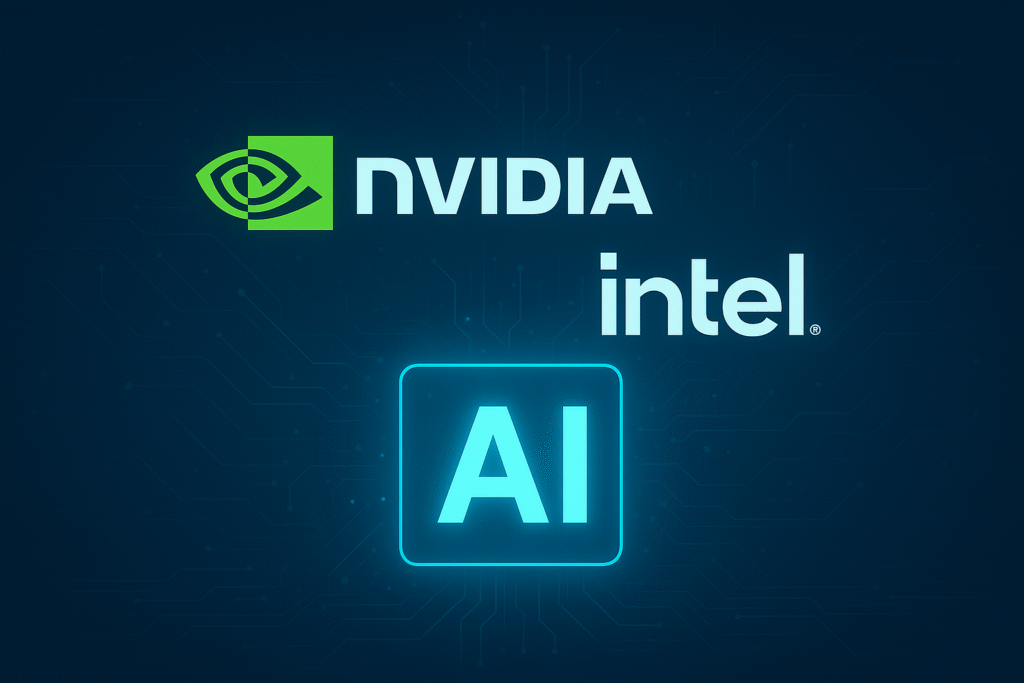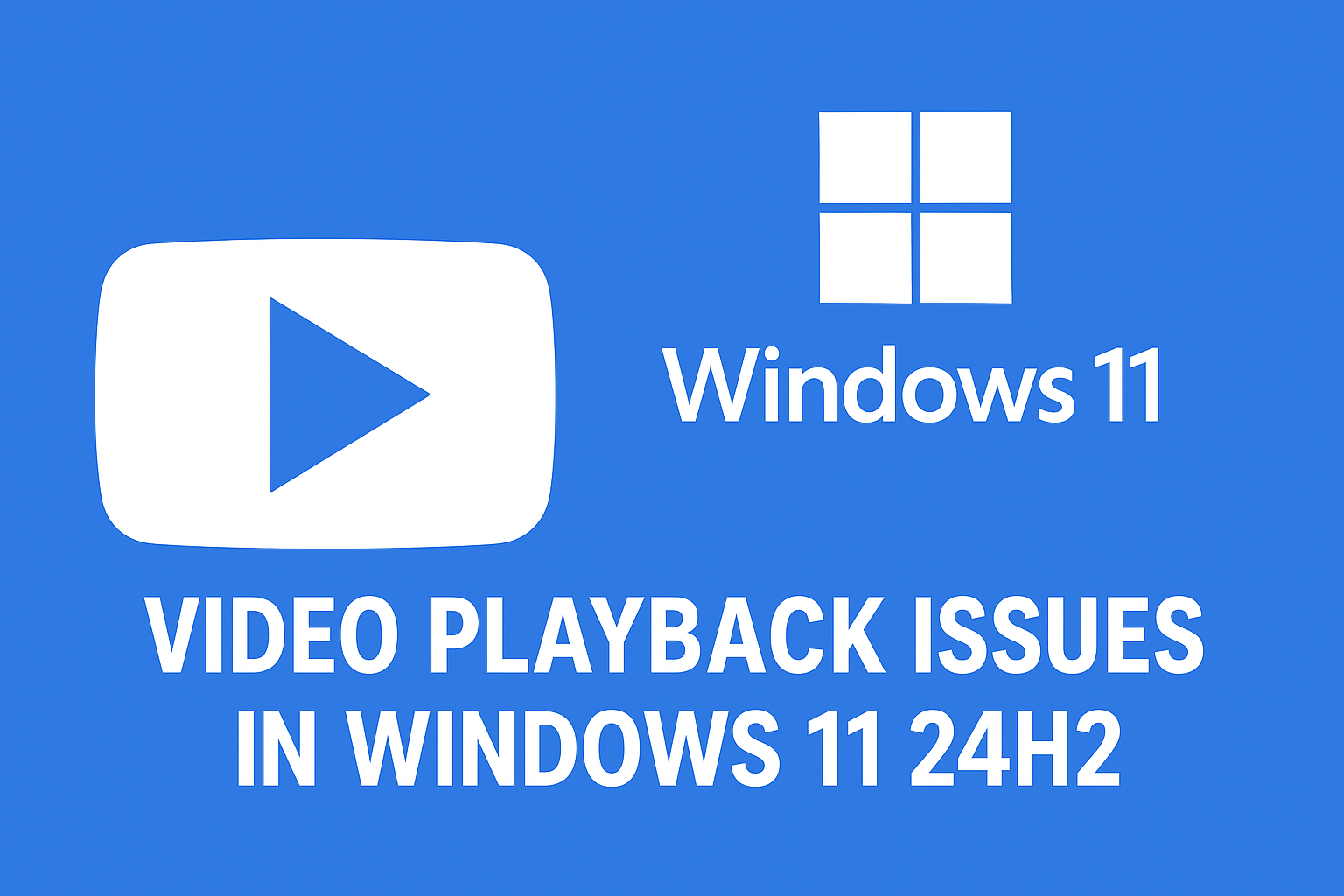
NVIDIA and Intel to Develop AI Infrastructure
📑 Table of Contents
- Introduction: The Strategic Collaboration Between Two Tech Giants
- Overview of NVIDIA and Intel’s Market Leadership
- NVIDIA’s Dominance in AI and GPU Computing
- Intel’s Stronghold in CPUs and Data Infrastructure
- Why This Partnership Matters in Today’s AI Landscape
- Global Demand for AI Infrastructure
- Rise of AI in Personal Computing Devices
- Areas of Collaboration Between NVIDIA and Intel
- AI Data Centers and Cloud Infrastructure
- Personal Computing with AI-Powered Laptops and Desktops
- Edge AI and IoT Applications
- Potential Benefits for Enterprises and Consumers
- Technological Challenges Ahead
- Industry Implications of the Partnership
- Comparing NVIDIA and Intel’s Approach to AI vs. Rivals
- Real-World Applications of This Collaboration
- Expert Opinions and Market Predictions
- FAQs
- Conclusion
Introduction: The Strategic Collaboration Between Two Tech Giants
The technology landscape is evolving at lightning speed, and artificial intelligence (AI) sits at its center. In a groundbreaking move, NVIDIA and Intel announced plans to develop AI infrastructure and personal computing products together. This collaboration isn’t just about pooling resources—it signals a shift in how future computing power will be built, delivered, and utilized.
By combining NVIDIA’s expertise in GPUs and AI software with Intel’s strength in CPUs, networking, and manufacturing, the two companies aim to reshape everything from large-scale AI data centers to personal laptops powered by intelligent processors.
Overview of NVIDIA and Intel’s Market Leadership
NVIDIA’s Dominance in AI and GPU Computing
NVIDIA has become synonymous with AI. Its graphics processing units (GPUs) are the backbone of machine learning, powering everything from ChatGPT-style language models to autonomous vehicles. With its CUDA platform and DGX systems, NVIDIA provides the computational horsepower behind today’s AI revolution.
Intel’s Stronghold in CPUs and Data Infrastructure
Intel, on the other hand, has decades of experience as the world’s leading CPU manufacturer. Beyond processors, Intel plays a crucial role in networking, memory solutions, and semiconductor innovation. Its Xeon processors and Habana AI chips already serve as cornerstones in enterprise AI workloads.
Together, NVIDIA and Intel can merge GPU and CPU performance into a unified ecosystem—one that empowers both high-performance computing (HPC) and personal computing devices.
Why This Partnership Matters in Today’s AI Landscape
Global Demand for AI Infrastructure
AI is no longer niche. From finance to healthcare, industries demand high-powered AI solutions. Cloud providers like AWS, Google Cloud, and Microsoft Azure rely heavily on advanced chips, and this partnership aims to meet that growing demand.
Rise of AI in Personal Computing Devices
AI isn’t just for data centers. PCs are becoming smarter, embedding AI directly into laptops for faster video editing, speech recognition, and even gaming optimization. With NVIDIA and Intel joining forces, personal computing could reach levels of intelligence we’ve only imagined.
Areas of Collaboration Between NVIDIA and Intel
AI Data Centers and Cloud Infrastructure
Data centers are the lifeblood of AI. NVIDIA’s GPUs accelerate deep learning models, while Intel’s Xeon processors handle orchestration, networking, and memory. By combining forces, the two companies could design hybrid architectures optimized for both training massive AI models and running real-time inference at scale. This would allow cloud providers to deliver faster, cheaper, and more energy-efficient AI services.
Personal Computing with AI-Powered Laptops and Desktops
Imagine opening a laptop where AI doesn’t just run in the background—it’s embedded directly into the hardware. Intel’s CPUs could handle system performance, while NVIDIA GPUs boost real-time AI features such as intelligent multitasking, video rendering, or even local language models running offline. For creators, gamers, and professionals, this translates into personal devices that feel like mini data centers.
Edge AI and Internet of Things (IoT) Applications
The partnership also targets the edge computing market, where low-latency AI processing is critical for devices like autonomous drones, smart cameras, and factory robots. NVIDIA’s Jetson platform and Intel’s edge processors could be jointly optimized, creating powerful yet compact systems for real-world AI deployments.
Potential Benefits for Enterprises and Consumers
Enhanced AI Model Training and Deployment
For enterprises, faster AI model development means quicker insights and competitive advantage. Training GPT-sized models or computer vision networks could become more cost-effective with NVIDIA-Intel optimized clusters.
Faster, Smarter PCs for End Users
For everyday users, AI could transform productivity and entertainment. Think instantaneous video editing, real-time gaming enhancements, or voice assistants that operate without cloud connectivity.
Energy-Efficient Computing at Scale
Sustainability is also on the table. Both companies are working on reducing energy consumption per computation, which is vital as AI workloads skyrocket. Enterprises and consumers benefit when performance doesn’t come at the cost of higher electricity bills.
Technological Challenges Ahead
Compatibility of Hardware Architectures
Merging NVIDIA’s GPU ecosystem with Intel’s CPU infrastructure isn’t trivial. Developers and engineers need cross-platform software stacks that allow seamless integration.
Competition from AMD, Apple, and Other Players
AMD is a direct rival in both CPU and GPU markets, while Apple’s ARM-based silicon is redefining personal computing. This partnership must outpace these competitors in performance and efficiency.
Balancing Performance and Cost Efficiency
Delivering cutting-edge AI systems at a reasonable cost remains a challenge. Striking the right balance between premium performance and affordability will determine adoption rates.
Industry Implications of the Partnership
Impact on Cloud Service Providers
Cloud giants like AWS, Microsoft, and Google could benefit from new hardware options, but they’ll also have to decide whether to deepen reliance on NVIDIA-Intel solutions or diversify with alternatives.
Influence on AI Startups and Developers
Smaller AI startups may gain more accessible hardware platforms optimized for AI workloads. This democratization could accelerate innovation across industries.
Shaping the Future of Consumer Electronics
If successful, this collaboration might spark an AI-first era in consumer devices, where PCs, tablets, and even smart TVs embed advanced AI functions.
Comparing NVIDIA and Intel’s Approach to AI vs. Rivals
NVIDIA + Intel vs. AMD
AMD has made strides with its Ryzen CPUs and Radeon GPUs, but NVIDIA-Intel brings a more complementary pairing of strengths: GPUs designed for AI acceleration and CPUs designed for system performance.
NVIDIA + Intel vs. Apple Silicon
Apple’s M-series chips show how tightly integrated hardware and AI features can reshape consumer devices. The NVIDIA-Intel partnership aims to scale that approach to both enterprise and personal computing markets.
NVIDIA + Intel vs. ARM-Based Solutions

ARM-based chips dominate mobile and embedded systems, but may struggle with scaling to massive AI workloads. NVIDIA-Intel could leverage manufacturing and performance advantages to challenge ARM’s dominance.
Real-World Applications of This Collaboration
AI-Powered Gaming PCs
Gamers stand to gain the most visible benefits. With NVIDIA’s GeForce GPUs and Intel’s CPUs working in sync, AI can enhance frame rates, predict player actions, and create more immersive worlds.
Next-Gen Productivity Tools and Software
Office applications could soon feature built-in AI copilots, running locally on PCs rather than relying entirely on cloud-based AI. This allows for greater privacy, speed, and efficiency.
Healthcare, Automotive, and Smart Cities
AI-powered diagnostics, self-driving cars, and intelligent city infrastructure require both raw GPU power and CPU orchestration. NVIDIA and Intel’s synergy could push these industries toward breakthroughs.
Expert Opinions and Market Predictions
Analysts’ Views on AI Infrastructure Growth
Industry analysts forecast that AI infrastructure spending will grow by double digits annually through 2030. This collaboration positions NVIDIA and Intel to capture a significant share of that market.
Forecasts for Personal Computing Market
PC sales have slowed in recent years, but analysts predict that AI-powered features could spark a new wave of upgrades. Consumers may see a fresh cycle of demand similar to the laptop boom of the early 2000s.
Comparing NVIDIA and Intel’s Approach to AI vs. Rivals
Here’s a clear comparison table to show where NVIDIA and Intel stand against key competitors:
| Feature/Focus Area | NVIDIA + Intel | AMD | Apple Silicon | ARM-Based Chips |
|---|---|---|---|---|
| Core Strengths | GPUs + CPUs synergy, large-scale AI, enterprise + consumer reach | Strong CPU/GPU integration | Tight hardware-software integration, power efficiency | Dominant in mobile/IoT, scalable designs |
| AI Infrastructure | Cloud + data centers, hybrid computing | Competitive but smaller market share | Limited focus on large-scale AI | Growing adoption in servers |
| Personal Computing | AI-powered PCs (gaming + productivity) | Gaming PCs, high-performance desktops | MacBooks, iPads with AI features | Chromebooks, lightweight devices |
| Market Position | Enterprise + consumer dominance | Challenger in performance/value | Premium consumer brand | Cost-efficient, mobile-first |
| Future Outlook | Strong potential with joint ecosystem | Competitive in cost-sensitive markets | Continued growth in creative/pro markets | Expanding in servers and edge AI |
Frequently Asked Questions (FAQs)
1. Why are NVIDIA and Intel collaborating on AI infrastructure?
Because combining GPUs and CPUs allows for more efficient, powerful systems that serve both enterprise data centers and personal computing devices.
2. Will this partnership affect cloud service providers?
Yes, cloud providers may gain access to better hybrid architectures, boosting efficiency for AI workloads.
3. How will consumers benefit from this collaboration?
Consumers could see faster laptops, AI-enhanced gaming PCs, and energy-efficient devices with smarter capabilities.
4. What industries stand to benefit the most?
Healthcare, finance, gaming, automotive, and smart cities are expected to be early winners.
5. Who are the main competitors to NVIDIA and Intel in this space?
AMD, Apple (with Apple Silicon), and ARM-based chipmakers represent the biggest challengers.
6. When will AI-powered personal computing devices become mainstream?
Experts suggest within 2–4 years, AI-ready PCs could hit mainstream adoption, especially as enterprise demand drives hardware evolution.
Conclusion: Redefining the Future of AI and Computing
The announcement that NVIDIA and Intel will develop AI infrastructure and personal computing products together represents more than a partnership. It’s a roadmap for the future of computing—one where AI is deeply embedded at every level, from massive cloud servers to the laptop on your desk.
This alliance could transform industries, supercharge innovation, and bring intelligent computing into everyday life. Whether they can outpace fierce competition remains to be seen, but one thing is clear: the race for AI-powered computing has entered a bold new chapter.
Also Read This: GEO vs SEO Game Changer Plan: How to Invest for Maximum ROI





















Post Comment